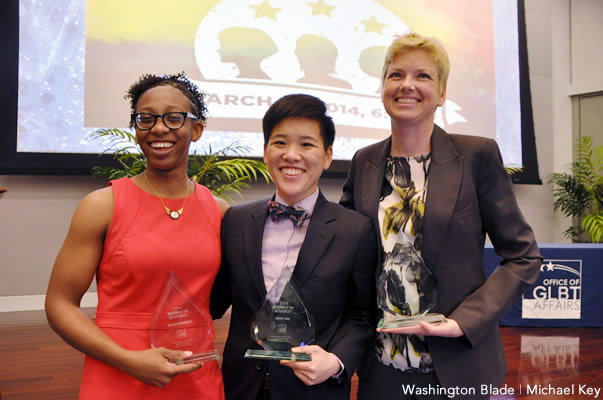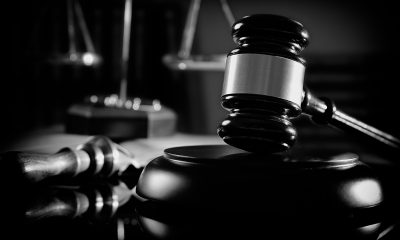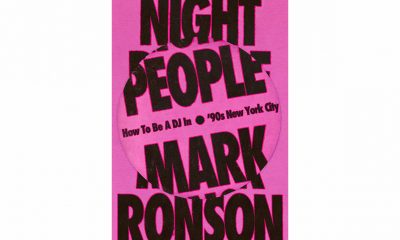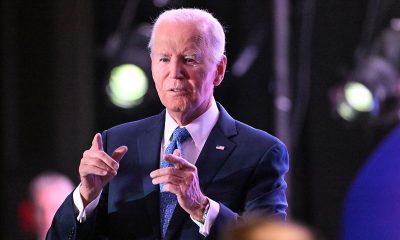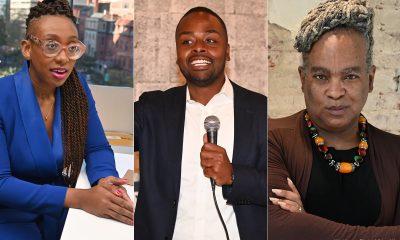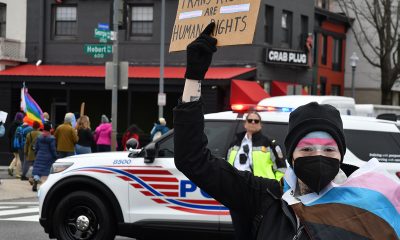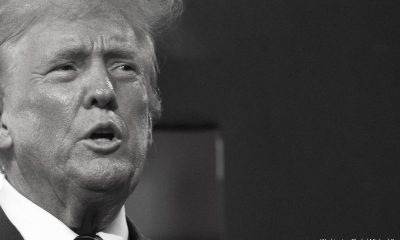homepage news
U.S. Civil Rights Commission reiterates support for Equality Act
Commission approves resolution before presentation on Stonewall
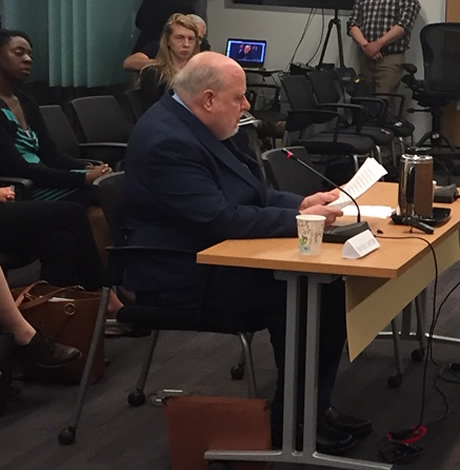
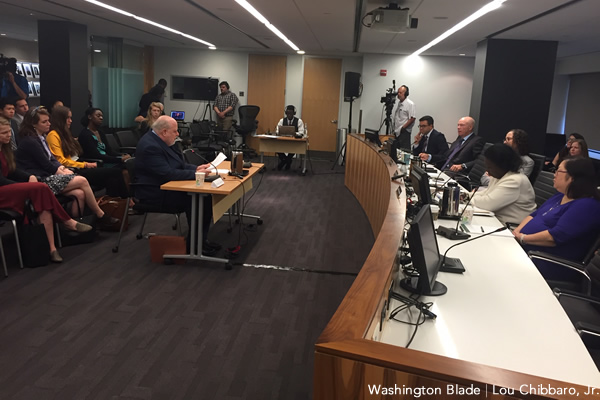
David Carter speaks before the U.S. Commission on Civil Rights. (Washington Blade photo by Lou Chibbaro, Jr.)
The U.S. Commission on Civil Rights on June 7 approved an official resolution praising the House of Representatives for passing the LGBT civil rights bill known as the Equality Act and urging the Senate to move expeditiously to pass the legislation.
The Commission’s action came on the same day gay historian David Carter, author of the widely acclaimed book Stonewall: The Riots That Sparked The Gay Revolution, appeared before the commission at its invitation to give a presentation on the historical significance of Stonewall and its impact on the LGBT civil rights movement.
“The U.S. Commission on Civil Rights, by majority vote, applauds the passage of the Equality Act by the House of Representatives as an important first federal step in securing the equal rights of the LGBT community,” the resolution states.
“The bill amends the Civil Rights Act of 1964 and other civil rights laws to explicitly ban discrimination against LGBT people in public accommodations, education, federally funded programs, employment, housing, credit opportunities, and jury service,” the resolution says.
The resolution goes on to say that the Commission recognizes that existing federal law “properly interpreted already protects LGBT persons from discrimination in the workplace.” But it says that given “inconsistent federal court decisions” on the issue and conflicting state laws federal legislation like the Equality Act is needed to ensure equality under the law for LGBT people.
In his presentation before the Commission, Carter provided detailed historical background on the discrimination and persecution faced by LGBT people prior to the 1969 Stonewall riots in New York City that have been credited with triggering the modern LGBT rights movement.
Carter pointed out, however, that a fledgling gay rights movement that he credited D.C. gay rights pioneer Frank Kameny with starting in the early 1960s made it possible for activists to convert the spontaneous street protests that followed the Stonewall riots into a focused and effective political movement for LGBT rights.
He noted that Kameny and his supporters modeled their efforts on the African American Civil rights movement.
“The Stonewall Uprising is historic for one reason,” Carter said in his presentation. “It inspired the creation of a new phase of the movement for the rights of gay men and lesbians (and later, for bisexuals and the transgendered) and this new phase, the gay liberation movement, created a mass movement, making most of the gains over the past five decades possible,” he said.
“The narrative of the Stonewall Uprising is a very powerful story for a number of reasons,” Carter said. “It seemed to come out of nowhere and was totally unexpected. It was a spontaneous event, totally unplanned and undirected,” he continued.
“And what happened in a seedy club run by the Mafia, and the groups that first turned against the police were primarily effeminate boys who lived on the streets, sissies rejected by their families and by society, prostitutes, a butch lesbian, and transgendered [women] – that such a group could not only lead an effective revolt against the police but also terrify them seemed too good to be true,” Carter said.
“Yet this is what happened,” said Carter, as Commission members and about 25 visitors listened intently. “Thus Stonewall symbolizes both gay people standing up for themselves en masse for the first time – spontaneously – and winning,” he said. “And this is the kind of raw material from which legends have always sprung.”
Presentation before the United States Civil Service Commission
On the History of the Stonewall Uprising and the LGBT Civil Rights Movement
By David Carter
June 7, 2019
Good afternoon. I want to thank Catherine E. Lhamon, the chair of the Commission, as well as the other members of the Commission for according me the honor of appearing before you.
I have been asked to speak about my work on the history of the Stonewall Uprising, which is, of course, the best-known single event in the history of this movement, a 6-day rebellion that began as a result of a police raid on June 28, 1969 on the Stonewall Inn, a popular gay club in Greenwich Village. The facts of the Stonewall Uprising are well established as is general information about the Stonewall club and how it operated. However to understand the meaning of the event requires information that goes beyond these sets of facts, including information that has not become integrated into media accounts, documentaries, and museum exhibitions. Because one needs to be aware of a much greater context of the history beyond the events of the Uprising to interpret the Uprising’s meaning and its historical implications accurately, I will not spend much time today on the Uprising itself but on this larger context.
Homosexual acts had been illegal since the nation’s founding but an increase in the intolerance of homosexuality seems to have taken root around the time of the Great Depression. After World War II, with the advent of the Cold War and the Red Scare, exemplified by a virulent anticommunism and the demand for total conformity that characterized the 1950s, laws aimed at homosexuals became so harsh that at times they were draconian.
The Defense Department hardened its policy of excluding homosexual servicemen and women, tripling the World War II discharge rate and reversed prior practice by generally giving less-than-honorable “blue discharges.” These punitive discharges stripped thousands of veterans of the benefits that had been promised them in the G.I. Bill of Rights. After Lieutenant Roy Blick of the Washington, DC vice squad testified before the Senate in 1950 that 5,000 homosexuals worked for the government (a figure he had fabricated), the Senate authorized an investigation into the matter by a subcommittee chaired by North Carolina Senator Clyde Hoey. The Hoey subcommittee’s report stated: “those who engage in overt acts of perversion lack the emotional stability of normal persons.” Having concluded that “One homosexual can pollute an entire office,” the subcommittee urged that the military’s recent purge of homosexuals be the model for civilian agencies.
The Civil Service Commission and the FBI complied by initiating an intense campaign to ferret out homosexuals by correlating morals arrests across the United States with lists of government employees and checking fingerprints of job applicants against the FBI’s fingerprint files.
After Dwight Eisenhower became president, he signed Executive Order 10,450, in April, 1953, which added “sexual perversion” as a ground for government investigation and dismissal. The government shared police and military records with private employers, resulting in the dismissal of hundreds.
While McCarthyism encouraged the toughening of laws toward homosexuals because they were believed to be security risks, America’s Puritan tradition was producing a furor over child molestation. Homosexuals were believed to be the main culprits. As the right-wing demonization proceeded apace, the negative qualities attributed to homosexuals overlapped until it became a common assumption that any man or woman who was homosexual was so beyond the pale that she or he must also partake of the most forbidden ideological fruit of all, communism.
As homosexuals became handy scapegoats for both of these postwar preoccupations, antihomosexual laws were made more severe. Twenty-nine states enacted new sexual psychopath laws and/or revised existing ones, and homosexuals were commonly the laws’ primary targets. In almost all states, professional licenses could be revoked or denied because of homosexuality, so that professionals could lose their livelihoods. In 1971 twenty states had “sex psychopath” laws permitting them to detain homosexuals. In Pennsylvania and California, sex offenders could be locked in a mental institution for life, and in seven states they could be castrated. At California’s Atascadero State Hospital, men convicted of consensual sodomy were given electrical and pharmacological shock therapy, castrated, and had lobotomies performed on them, as authorized by a 1941 law.
It has been pointed out that no specific statute outlawed being homosexual and that only homosexual acts were illegal. While this is technically true, the effect of the entire body of laws and policies that the state employed to police the conduct of homosexual men and women was to make being gay a crime de facto. The harshness of these laws made judges generally unwilling to sentence homosexual men, lesbians, and transvestites to such inhumane sentences and instead they tended to hand out light fines or to place those convicted on probation. But the random or selective use of far harsher penalties, and the potential threat of their use, combined with other sanctions and harassments, major and minor, official and nonofficial, were more than sufficient to keep the vast majority of homosexual men and women well with the lines that society had drawn for them.
Having created all manner of sanctions to make it difficult for homosexuals to meet their own kind, the police aggressively patrolled the few places where homosexuals could mingle: bars, bath houses, and outdoor cruising places such as streets, parks, and beaches. Some jurisdictions planted microphones in park benches and used peepholes and two-way mirrors to spy on homosexuals in public restrooms.
While the law classified homosexuals as criminals and the scientific establishment used psychology to medicalize homosexuality into an illness, gay men and lesbians found almost universal moral condemnation from religions, whether mainstream or obscure. Thrice condemned—as criminals, as mentally ill, and as sinners—homosexuals faced a social reality in post-World War II America that was bleak if not grim.
To shift from the national perspective to that of a single state, namely New York, one place that gay people sought as a refuge was Greenwich Village. The Village’s Bohemian reputation first attracted gay people to the area around the turn of the 20th century, as they sensed that a place known for wide tolerance might accept even sexual nonconformists.
As word increasingly got out nationwide that there were large numbers of gay people in Greenwich Village, more and more gay men and lesbians were drawn there. Eventually New York had the largest gay population in the United States, and the Village increasingly served as a center for the growing homosexual subculture.
But New York was also the city that most aggressively and systematically targeted gay men as criminals. Police vice squads—which New York City was the first to create—attempted to control homosexuals by observing locales where people congregated, using decoys to entice them, and raiding gay bars and baths.
When Prohibition ended, New York created the State Liquor Authority (SLA) and gave it practically total leeway in administering and enforcing these laws. The SLA interpreted the laws so that even the presence of homosexuals—categorized as people who were “lewd and dissolute”—in a bar made that place disorderly and subject to closure. The result was that New York City was the most vigorous investigator of homosexuals before World War II. Responding to right-wing pressure after the war, New York City modernized its stakeout, decoy, and police raid operations and continued to haul in thousands of homosexuals, sometimes just for socializing at a private party. More commonly the police arrested them at bars and in cruising areas. By 1966 over one hundred men were arrested each week for “homosexual solicitation” as a result of police entrapment.
Making it impossible for bars to legally serve homosexuals created a situation that could only lead to criminals stepping in. The Mafia entered into the vacuum to run gay bars, which in turn set up a scenario for police corruption and the exploitation of the bars’ customers. These last were not likely to complain because they had nowhere else to go and because they feared the mob. The corruption spread as the police and SLA agents were paid off by the Mafia, and lawyers charged homosexual clients caught between the Mafia, the police, and the SLA exorbitant fees, part of which was then used to bribe judges.
Such repression resulted in resistance. The first organization to begin organized ongoing political resistance to the oppression of gay people was the Mattachine Society, founded in 1951. However, because of the intense rightward shift the nation experienced in the 1950s, the early radical spirit of that organization was lost. The approach then changed to relying on psychiatrists to say that homosexuals were not criminals but mentally ill persons who needed therapy. The Mattachine, or homophile, movement, also hoped to educate the public to be more tolerant. These approaches constituted a strategy that became known as the education and research approach.
Frank Kameny was one of those citizens caught up in the federal dragnet. A Harvard-educated astronomer, Kameny had been hired by the Army Map Service but was summarily fired when the government discovered that he was homosexual. After failing to get his job back in spite of doing all he could as an individual, he turned to an organizational approach. His last gambit had been a petition he sent to the US Supreme Court to hear his case. Inspired by basic principles of American democracy, the black civil rights movement, and sociologist Edward Sagarin’s assertion that homosexuals are a valid minority, Kameny argued that the government should not only not persecute homosexuals but should work to end discrimination against them. Kameny used the analysis from his Supreme Court petition when he started an organization in Washington, DC, the Mattachine Society of Washington, to argue that the homophile movement is a civil rights movement that must settle for nothing less than full legal and social equality.
Kameny’s was at first a lonely voice, but he soon won a few activists over to his side, and with each passing year won more support. In 1964 Kameny was invited to give a speech to the Mattachine Society of New York. There he articulated publicly the arguments he had crafted in his Supreme Court petition. He also urged that New York City activists work to accomplish two goals: to end police entrapment and to legalize gay bars. The speech so electrified the Mattachine-NY membership that the next year they threw out the officers who supported the education and research approach and elected a slate of militants to pursue a civil rights strategy.
Dick Leitsch became president of Mattachine-NY and, following Kameny’s advice, succeeded in ending the NYPD entrapment of gay men and gradually made significant progress toward legalizing gay bars.
The Stonewall Inn club opened during this period of progress toward the legalization of gay bars. It became popular because it was the only gay club in New York City where dancing was allowed regularly but more particularly where slow dancing was allowed. It was also the city’s largest gay club and was located just a block and half from the very heart of the male gay social area, the intersection of Christopher Street and Greenwich Avenue. The club was broadly tolerant about who was admitted and thus became popular with a wide cross-section of the community.
At the same time, it was a Mafia bar that was run only to exploit a community ripe for exploitation, so it charged exorbitant prices for drinks. It was also dirty and sold questionable Mafia alcohol. But while most customers were willing to put up with these features to have a place to dance and socialize, some customers fared worse. One of the managers of the Stonewall was a career criminal named Ed Murphy who was arrested in the mid-sixties for running an extensive national operation blackmailing homosexuals Murphy found via a prostitution ring. He used an office above the Stonewall in the late 1960s to run a prostitution ring. The Stonewall’s waiters were also used to collect information on their customers, especially those with more lucrative careers.
When the New York Police Department received a query from Interpol about bonds surfacing on European streets, they investigated and determined that they were stolen by a Wall Street employee who had been blackmailed because of his homosexuality. Further investigation pointed to the area around the Stonewall as the likely origin of the blackmailing operation. At a time of extensive investigation into police corruption in New York City, Seymour Pine, a police officer with a reputation for being honest, had been transferred against his wishes to head the First Division of the Public Morals police. Soon thereafter he was summoned to a meeting with his captain and ordered to put the Stonewall out of business because of its connection with the Mafia blackmail operation.
After some more routine raids on the Stonewall, Pine organized a large raid early in the morning of June 28, 1969, but the real reason for the raid was not made public. By this time, Pine had gathered from previous raids on the Stonewall that the local Sixth Precinct was informing the club when a raid was planned, so for this larger raid Pine did not inform the Sixth Precinct, which was supposed to assist in the raid after it was underway.
When the raid began, almost everything went wrong from the beginning from the police perspective. Pine, who was used to raiding early when there were few occupants in the club, this time ran into an unusual degree of resistance from patrons. Also, the 6th Precinct did not respond to Pine’s signals for help later when the crowd began to get out of control.
The crowd that had gathered in the street outside the Stonewall was made up of the club’s customers and passersby. Initially, the reaction of the crowd to the police went back and forth between expressions of anger and humor. As the crowd witnessed the police be rough with some of the club’s patrons, they became more angry. The culmination came when a lesbian being carried out of the club was treated brutally by the police. After she escaped twice from a patrol car, she was thrown inside the vehicle. The lesbian’s harsh treatment was the tipping point that caused the crowd to become furious. Pine, sensing the danger to his officers after the patrol wagon left with the initial group of prisoners, thought it too dangerous to remain on the sidewalk. He retreated into the club, where the remaining prisoners were being held for the next patrol wagon. One reason for the great anger was a belief that the gay persons held inside the club were being beaten by the police. A loose parking meter was uprooted and used as a battering ram on the club, cobblestones and bricks were thrown, and lighter fluid was used to try to set the club on fire.
Pine finally managed to get an undercover policewoman out through a back window. She went to a fire station and put in a call for help from the Tactical Police Force, or riot police. Soon firetrucks arrived as well as the riot police and a patrol wagon from the 6th Precinct. The police inside the Stonewall were rescued and the prisoners taken away. The police wrecked the bar and the riot police were brutal in clearing the streets of protestors.
But the crowd was not cowed by the large numbers of helmeted police brandishing batons. When the police formed a phalanx and cleared Christopher Street, the street the Stonewall club was on, the crowd merely used the highly irregular Village street layout to come back around behind the police. This was a scenario that was repeated many times. On the next day, the crowds were much larger and the violence was even greater. On Sunday, the third day, the police were less confrontational, the crowds smaller, and there are no reports of violence. There were only sporadic skirmishes between the police and small numbers of civilians on Monday and Tuesday. The following day, the Village Voice appeared, featuring the Uprising but using derogatory terms such as “faggot” and “dyke” to describe members of the crowd. The Voice coverage brought the Uprising to the attention of a much larger group of people and angered the gay population. The result was that the sixth and last night of the Stonewall Uprising was much like the first two nights: a large crowd and much violence.
When the Uprising was over those who witnessed it sensed that nothing would ever be the same for the movement. There was much discussion about what should be done. A handful of people realized that it was urgent that something be made of this event before the unleashed energy dissipated. After a series of meetings, a decision was made to form a new organization, the Gay Liberation Front or GLF. The GLF was modeled in large part on New Left groups of the 1960s. However those who became the leaders of the GLF were generally those with extreme views; some were avowed Marxists, and the organization wanted to take on all issues of oppression. Meetings tended to break down into long theoretical discussions, ad hominem attacks, and there was a lack of democratic process. Soon many of the founders and early members quit.
Some of these founded a new organization, the Gay Activists Alliance or GAA. GAA decided to work only on the issue of rights for gay people, to adhere to democratic principles at meetings, and to eschew the use of violence. GAA also used tactics that it called zaps—creative demonstrations that combined guerilla theater and camp humor—to undermine its opponents. To give one example, when Harper’s published a vicious essay attacking gay people and refused to publish a rebuttal written by homosexuals, GAA occupied their offices but brought along coffee and doughnuts, approaching members of the staff saying, “I’m a homosexual. Would you like a doughnut?” With zaps and other subversive and creative tactics, GAA was soon in the national media, growing rapidly, and starting new chapters nationwide.
Because of GAA, GLF, and other new gay liberation organizations that sprang up, such as Radical Lesbians, there was soon a mass movement for the civil rights of lesbians and gay men. Having a mass movement made possible the passage of new legislation to decriminalize same-sex behavior and changes by nongovernmental organizations to end discriminatory practices.
So why is the Stonewall Uprising historic and what are the lessons from the Uprising?
The Stonewall Uprising is historic for one reason: it inspired the creation of a new phase of the movement for the rights of gay men and lesbians (and later, for bisexuals and the transgendered) and this new phase, the gay liberation movement, created a mass movement, making most of the gains over the past 5 decades possible. Stonewall and the gay liberation movement also inspired similar new organizations around the world, so that globally LGBT people have more civil rights than they did 50 years ago. This is why I often say that to study the Uprising without learning about the gay liberation phase of the GLBT civil rights movement is like studying the fall of the Bastille while knowing nothing about the French Revolution.
Second, I would like to note that while there are many factors that came together to create the Stonewall Uprising, the most important of all these causes is the progress made during the homophile phase of the movement, particularly locally in New York City. This was a conclusion reached by none other than Craig Rodwell, a man whose perspective is of primary importance for he was the chief critic of the Stonewall club, he was the main propagandist of the Stonewall Uprising, and it was he who had the idea to celebrate the event annually with a march commemorating the revolt. In other words, had it not been for the work done by Dick Leitsch to end entrapment and legalize gay bars, following up on Kameny’s earlier suggestions, the explosion at Stonewall would in all likelihood not have occurred. I say this because of a series of reflections I had after I finished the first draft of my history of Stonewall because the narrative did not make sense to me: why did the explosion occur after all the progress under the Lindsay administration? The answer is that, as historians have noted, revolutions tend to occur after periods of liberalization. Or, to put it another way, while it took many factors coming together to create Stonewall, the longer I have lived with this history, the more I have come to feel that the most important cause in the long list of causes that created the matrix for the Uprising, the most fundamental was that work began as a result of Kameny’s civil rights approach, the local movement’s success in ending entrapment and the progress it made toward legalizing gay bars.
Immanuel Kant famously wrote about the French Revolution in “The Contest of Faculties” that “The occurrence in question does not involve any of those momentous deeds or misdeeds of men which make small in their eyes what was formerly great or make great what was formerly small. . . . No, it has nothing to do with all this. We are here concerned only with the attitude of the onlookers as it reveals itself in public while the drama of great political changes is taking place.” In other words, the French Revolution had the impact it did not because of its effects on those who participated in it but rather upon those who witnessed it. It was the same phenomenon with Stonewall: the event derived its power from the emotional shock it created in those who heard about it.
All of the above goes far to explain the powerful symbolism of Stonewall. But why does that power endure?
I believe that the answer lies in the meaning of historic or national symbolism itself. All nations and important movements have moments that have a power that exceeds what can be expressed by mere rational analysis of their historic effect. This is because these moments are symbolic, because they express the deepest truths experienced by the human heart. They become emblematic of the best in us, they symbolize our hopes and dreams, our feelings and yearnings, and all that we sense is our potential: the vision of a world as it should be or could be or as it needs to be. Thus when we learn about American history, certain stories, events, people, and moments are emphasized. For example, all school children learn the story of how Francis Scott Keyes watched through the night to see if Fort McHenry would fall under the intense British bombardment to which it was being subjected. When he saw the flag still flying in the morning, he knew that an important battle had not been lost and expressed this moment of hope and the triumph of faith in the words that became our national anthem. The stories—or images—of the Reverend Martin Luther King, Jr., giving his “I Have a Dream” speech, or of the American flag being raised over Iwo Jima, or of Rosa Parks refusing to move to a seat at the back of the bus are all moments and images that help define who we are, moments that exemplify our best and highest values and thus are potent symbols.
The narrative of the Stonewall Uprising is a very powerful story for a number of reasons. It seemed to come out of nowhere and was totally unexpected. It was a spontaneous event, totally unplanned and undirected. And it happened in a seedy club run by the Mafia, and the groups that first turned against the police were primarily effeminate boys who lived on the streets, sissies rejected by their families and by society, prostitutes, a butch lesbian, and transgendered men—that such a group could not only lead an effective revolt against the police but also terrify them seemed too good to be true. Yet this is what happened. And the police were astonished and terrified at the anger that they witnessed. Pine, who led the raid, had written the manual for hand-to-hand combat in World War II and been seriously injured in the Battle of the Bulge, yet he said he was never more afraid than he was inside that bar surrounded by hundreds of homosexuals. Thus Stonewall symbolizes both gay people standing up for themselves en masse for the first time—spontaneously—and winning. And this is the kind of raw material from which legends have always sprung.
All who witnessed the Stonewall Uprising were transfixed by it. That is the reason that less than half a year after the Uprising a homophile conference voted to celebrate the event annually. And the movement spawned by Stonewall continues to surge around the nation and the world. There was little international movement for LGBT civil rights before Stonewall, but the liberation movement inspired by the Stonewall Uprising has known no boundaries and has continued to overturn discriminatory and unjust policies in Europe, Asia, Africa, and every other part of the world. Thus the Stonewall Uprising is the most celebrated and symbolic event, both nationally and internationally, in the history of the LGBT movement for civil rights and equality from its earliest beginnings in Germany in the 19th century down through the present day.
Given the preeminence of Stonewall in the history of the LGBT civil rights movement, the event has been widely commemorated and celebrated within the movement. But until very recently the history of this movement has generally been ignored or given very limited recognition outside of the movement. This has begun to change, especially since the ruling establishing the right to marriage for same-sex couples by the Supreme Court, which seemed to say to many people that this is a legitimate moral movement. The two major speeches in which President Barack Obama linked the LGBT movement with those of the black civil rights movement and the movement for women’s rights helped the public to recognize the movement as legitimate American and civil rights history.
As for as official recognition of the Stonewall Uprising by the US government, this began with the Uprising site being listed on the National Register of Historic Places in 1999, being declared a National Historic Landmark in 2000, and being made a national monument in 2016.
I thank the Commission for its time, and I will be happy to respond to any questions that you may have.
homepage news
Honoring the legacy of New Orleans’ 1973 UpStairs Lounge fire
Why the arson attack that killed 32 gay men still resonates 50 years later
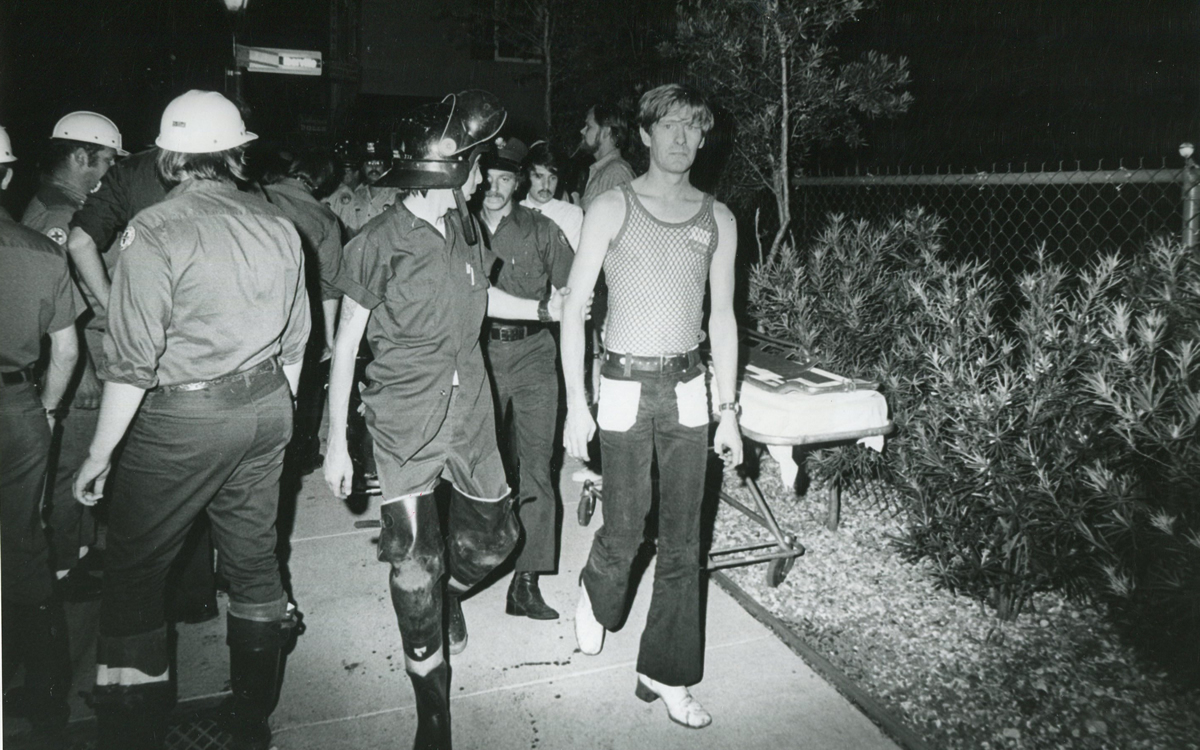
On June 23 of last year, I held the microphone as a gay man in the New Orleans City Council Chamber and related a lost piece of queer history to the seven council members. I told this story to disabuse all New Orleanians of the notion that silence and accommodation, in the face of institutional and official failures, are a path to healing.
The story I related to them began on a typical Sunday night at a second-story bar on the fringe of New Orleans’ French Quarter in 1973, where working-class men would gather around a white baby grand piano and belt out the lyrics to a song that was the anthem of their hidden community, “United We Stand” by the Brotherhood of Man.
“United we stand,” the men would sing together, “divided we fall” — the words epitomizing the ethos of their beloved UpStairs Lounge bar, an egalitarian free space that served as a forerunner to today’s queer safe havens.
Around that piano in the 1970s Deep South, gays and lesbians, white and Black queens, Christians and non-Christians, and even early gender minorities could cast aside the racism, sexism, and homophobia of the times to find acceptance and companionship for a moment.
For regulars, the UpStairs Lounge was a miracle, a small pocket of acceptance in a broader world where their very identities were illegal.
On the Sunday night of June 24, 1973, their voices were silenced in a murderous act of arson that claimed 32 lives and still stands as the deadliest fire in New Orleans history — and the worst mass killing of gays in 20th century America.
As 13 fire companies struggled to douse the inferno, police refused to question the chief suspect, even though gay witnesses identified and brought the soot-covered man to officers idly standing by. This suspect, an internally conflicted gay-for-pay sex worker named Rodger Dale Nunez, had been ejected from the UpStairs Lounge screaming the word “burn” minutes before, but New Orleans police rebuffed the testimony of fire survivors on the street and allowed Nunez to disappear.
As the fire raged, police denigrated the deceased to reporters on the street: “Some thieves hung out there, and you know this was a queer bar.”
For days afterward, the carnage met with official silence. With no local gay political leaders willing to step forward, national Gay Liberation-era figures like Rev. Troy Perry of the Metropolitan Community Church flew in to “help our bereaved brothers and sisters” — and shatter officialdom’s code of silence.
Perry broke local taboos by holding a press conference as an openly gay man. “It’s high time that you people, in New Orleans, Louisiana, got the message and joined the rest of the Union,” Perry said.
Two days later, on June 26, 1973, as families hesitated to step forward to identify their kin in the morgue, UpStairs Lounge owner Phil Esteve stood in his badly charred bar, the air still foul with death. He rebuffed attempts by Perry to turn the fire into a call for visibility and progress for homosexuals.
“This fire had very little to do with the gay movement or with anything gay,” Esteve told a reporter from The Philadelphia Inquirer. “I do not want my bar or this tragedy to be used to further any of their causes.”
Conspicuously, no photos of Esteve appeared in coverage of the UpStairs Lounge fire or its aftermath — and the bar owner also remained silent as he witnessed police looting the ashes of his business.
“Phil said the cash register, juke box, cigarette machine and some wallets had money removed,” recounted Esteve’s friend Bob McAnear, a former U.S. Customs officer. “Phil wouldn’t report it because, if he did, police would never allow him to operate a bar in New Orleans again.”
The next day, gay bar owners, incensed at declining gay bar traffic amid an atmosphere of anxiety, confronted Perry at a clandestine meeting. “How dare you hold your damn news conferences!” one business owner shouted.
Ignoring calls for gay self-censorship, Perry held a 250-person memorial for the fire victims the following Sunday, July 1, culminating in mourners defiantly marching out the front door of a French Quarter church into waiting news cameras. “Reverend Troy Perry awoke several sleeping giants, me being one of them,” recalled Charlene Schneider, a lesbian activist who walked out of that front door with Perry.
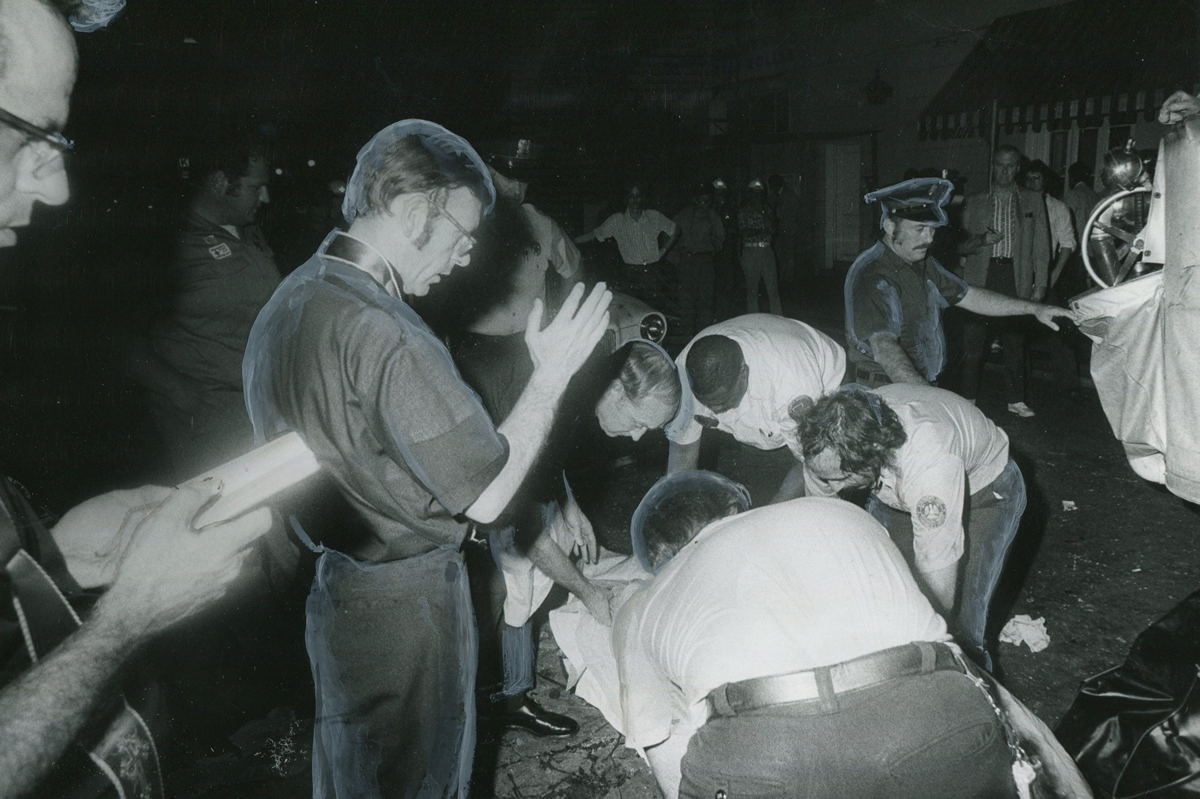
Esteve doubted the UpStairs Lounge story’s capacity to rouse gay political fervor. As the coroner buried four of his former patrons anonymously on the edge of town, Esteve quietly collected at least $25,000 in fire insurance proceeds. Less than a year later, he used the money to open another gay bar called the Post Office, where patrons of the UpStairs Lounge — some with visible burn scars — gathered but were discouraged from singing “United We Stand.”
New Orleans cops neglected to question the chief arson suspect and closed the investigation without answers in late August 1973. Gay elites in the city’s power structure began gaslighting the mourners who marched with Perry into the news cameras, casting suspicion on their memories and re-characterizing their moment of liberation as a stunt.
When a local gay journalist asked in April 1977, “Where are the gay activists in New Orleans?,” Esteve responded that there were none, because none were needed. “We don’t feel we’re discriminated against,” Esteve said. “New Orleans gays are different from gays anywhere else… Perhaps there is some correlation between the amount of gay activism in other cities and the degree of police harassment.”
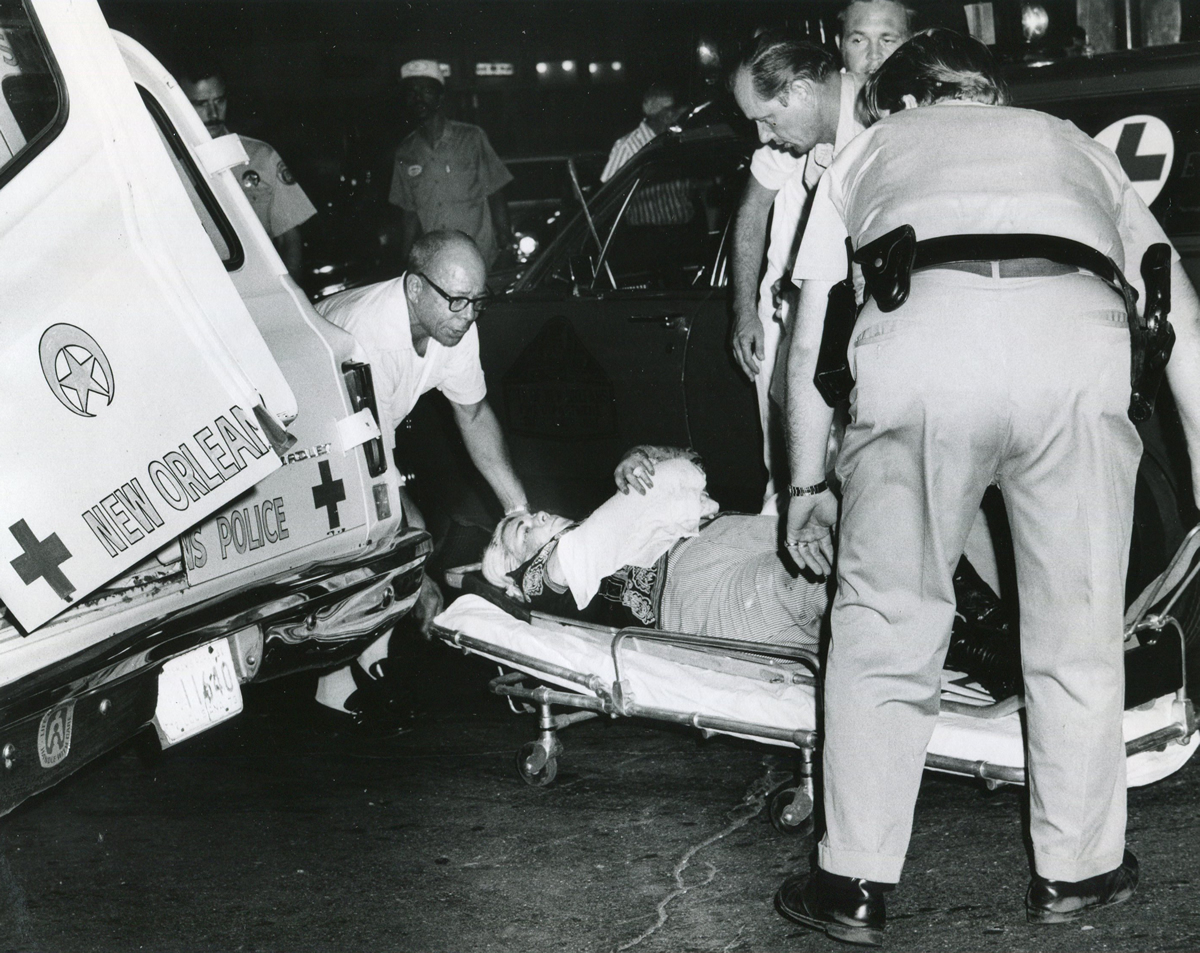
An attitude of nihilism and disavowal descended upon the memory of the UpStairs Lounge victims, goaded by Esteve and fellow gay entrepreneurs who earned their keep via gay patrons drowning their sorrows each night instead of protesting the injustices that kept them drinking.
Into the 1980s, the story of the UpStairs Lounge all but vanished from conversation — with the exception of a few sanctuaries for gay political debate such as the local lesbian bar Charlene’s, run by the activist Charlene Schneider.
By 1988, the 15th anniversary of the fire, the UpStairs Lounge narrative comprised little more than a call for better fire codes and indoor sprinklers. UpStairs Lounge survivor Stewart Butler summed it up: “A tragedy that, as far as I know, no good came of.”
Finally, in 1991, at Stewart Butler and Charlene Schneider’s nudging, the UpStairs Lounge story became aligned with the crusade of liberated gays and lesbians seeking equal rights in Louisiana. The halls of power responded with intermittent progress. The New Orleans City Council, horrified by the story but not yet ready to take its look in the mirror, enacted an anti-discrimination ordinance protecting gays and lesbians in housing, employment, and public accommodations that Dec. 12 — more than 18 years after the fire.
“I believe the fire was the catalyst for the anger to bring us all to the table,” Schneider told The Times-Picayune, a tacit rebuke to Esteve’s strategy of silent accommodation. Even Esteve seemed to change his stance with time, granting a full interview with the first UpStairs Lounge scholar Johnny Townsend sometime around 1989.
Most of the figures in this historic tale are now deceased. What’s left is an enduring story that refused to go gently. The story now echoes around the world — a musical about the UpStairs Lounge fire recently played in Tokyo, translating the gay underworld of the 1973 French Quarter for Japanese audiences.
When I finished my presentation to the City Council last June, I looked up to see the seven council members in tears. Unanimously, they approved a resolution acknowledging the historic failures of city leaders in the wake of the UpStairs Lounge fire.
Council members personally apologized to UpStairs Lounge families and survivors seated in the chamber in a symbolic act that, though it could not bring back those who died, still mattered greatly to those whose pain had been denied, leaving them to grieve alone. At long last, official silence and indifference gave way to heartfelt words of healing.
The way Americans remember the past is an active, ongoing process. Our collective memory is malleable, but it matters because it speaks volumes about our maturity as a people, how we acknowledge the past’s influence in our lives, and how it shapes the examples we set for our youth. Do we grapple with difficult truths, or do we duck accountability by defaulting to nostalgia and bluster? Or worse, do we simply ignore the past until it fades into a black hole of ignorance and indifference?
I believe that a factual retelling of the UpStairs Lounge tragedy — and how, 50 years onward, it became known internationally — resonates beyond our current divides. It reminds queer and non-queer Americans that ignoring the past holds back the present, and that silence is no cure for what ails a participatory nation.
Silence isolates. Silence gaslights and shrouds. It preserves the power structures that scapegoat the disempowered.
Solidarity, on the other hand, unites. Solidarity illuminates a path forward together. Above all, solidarity transforms the downtrodden into a resounding chorus of citizens — in the spirit of voices who once gathered ‘round a white baby grand piano and sang, joyfully and loudly, “United We Stand.”
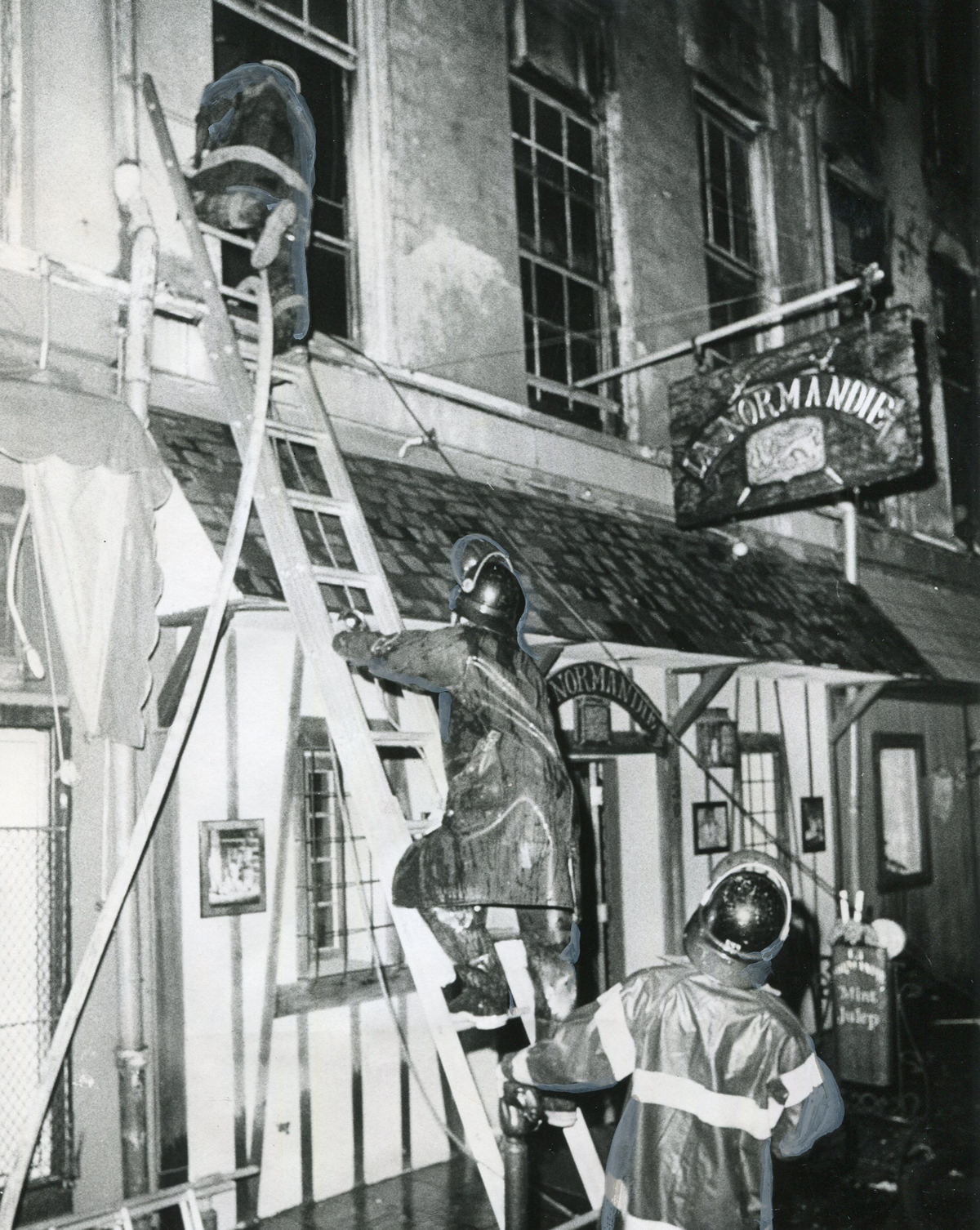
Robert W. Fieseler is a New Orleans-based journalist and the author of “Tinderbox: the Untold Story of the Up Stairs Lounge Fire and the Rise of Gay Liberation.”
homepage news
New Supreme Court term includes critical LGBTQ case with ‘terrifying’ consequences
Business owner seeks to decline services for same-sex weddings
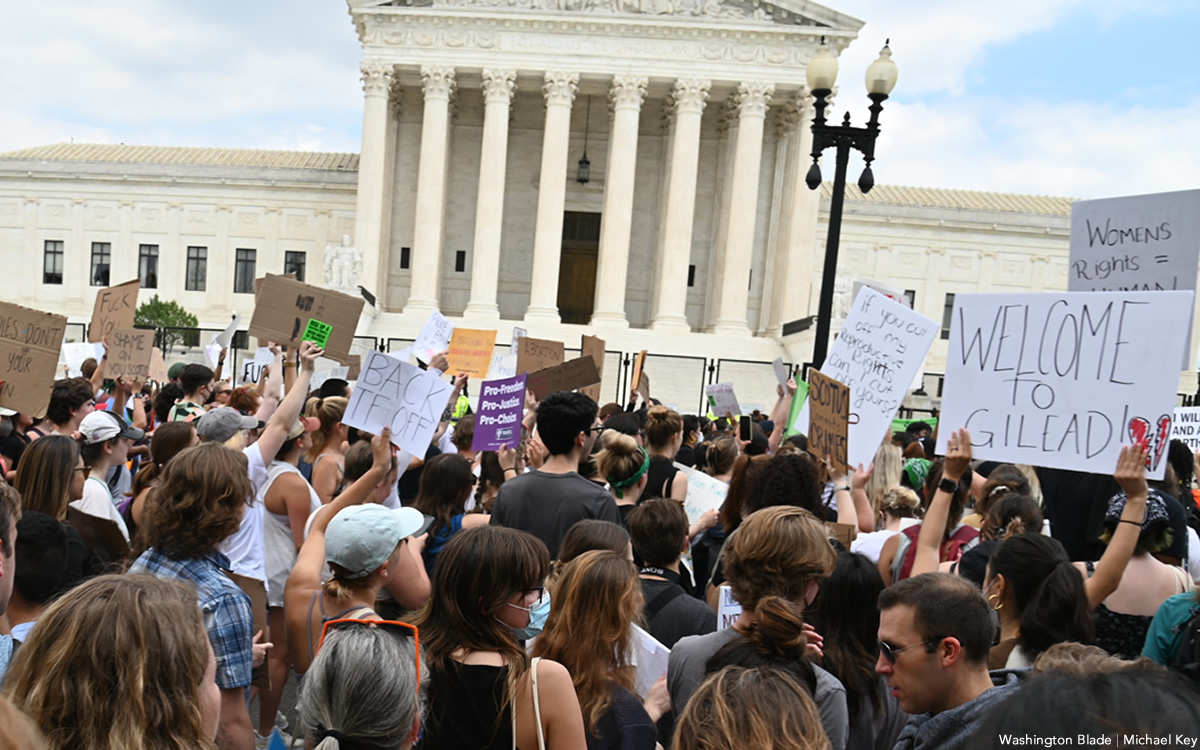
The U.S. Supreme Court, after a decision overturning Roe v. Wade that still leaves many reeling, is starting a new term with justices slated to revisit the issue of LGBTQ rights.
In 303 Creative v. Elenis, the court will return to the issue of whether or not providers of custom-made goods can refuse service to LGBTQ customers on First Amendment grounds. In this case, the business owner is Lorie Smith, a website designer in Colorado who wants to opt out of providing her graphic design services for same-sex weddings despite the civil rights law in her state.
Jennifer Pizer, acting chief legal officer of Lambda Legal, said in an interview with the Blade, “it’s not too much to say an immeasurably huge amount is at stake” for LGBTQ people depending on the outcome of the case.
“This contrived idea that making custom goods, or offering a custom service, somehow tacitly conveys an endorsement of the person — if that were to be accepted, that would be a profound change in the law,” Pizer said. “And the stakes are very high because there are no practical, obvious, principled ways to limit that kind of an exception, and if the law isn’t clear in this regard, then the people who are at risk of experiencing discrimination have no security, no effective protection by having a non-discrimination laws, because at any moment, as one makes their way through the commercial marketplace, you don’t know whether a particular business person is going to refuse to serve you.”
The upcoming arguments and decision in the 303 Creative case mark a return to LGBTQ rights for the Supreme Court, which had no lawsuit to directly address the issue in its previous term, although many argued the Dobbs decision put LGBTQ rights in peril and threatened access to abortion for LGBTQ people.
And yet, the 303 Creative case is similar to other cases the Supreme Court has previously heard on the providers of services seeking the right to deny services based on First Amendment grounds, such as Masterpiece Cakeshop and Fulton v. City of Philadelphia. In both of those cases, however, the court issued narrow rulings on the facts of litigation, declining to issue sweeping rulings either upholding non-discrimination principles or First Amendment exemptions.
Pizer, who signed one of the friend-of-the-court briefs in opposition to 303 Creative, said the case is “similar in the goals” of the Masterpiece Cakeshop litigation on the basis they both seek exemptions to the same non-discrimination law that governs their business, the Colorado Anti-Discrimination Act, or CADA, and seek “to further the social and political argument that they should be free to refuse same-sex couples or LGBTQ people in particular.”
“So there’s the legal goal, and it connects to the social and political goals and in that sense, it’s the same as Masterpiece,” Pizer said. “And so there are multiple problems with it again, as a legal matter, but also as a social matter, because as with the religion argument, it flows from the idea that having something to do with us is endorsing us.”
One difference: the Masterpiece Cakeshop litigation stemmed from an act of refusal of service after owner, Jack Phillips, declined to make a custom-made wedding cake for a same-sex couple for their upcoming wedding. No act of discrimination in the past, however, is present in the 303 Creative case. The owner seeks to put on her website a disclaimer she won’t provide services for same-sex weddings, signaling an intent to discriminate against same-sex couples rather than having done so.
As such, expect issues of standing — whether or not either party is personally aggrieved and able bring to a lawsuit — to be hashed out in arguments as well as whether the litigation is ripe for review as justices consider the case. It’s not hard to see U.S. Chief Justice John Roberts, who has sought to lead the court to reach less sweeping decisions (sometimes successfully, and sometimes in the Dobbs case not successfully) to push for a decision along these lines.
Another key difference: The 303 Creative case hinges on the argument of freedom of speech as opposed to the two-fold argument of freedom of speech and freedom of religious exercise in the Masterpiece Cakeshop litigation. Although 303 Creative requested in its petition to the Supreme Court review of both issues of speech and religion, justices elected only to take up the issue of free speech in granting a writ of certiorari (or agreement to take up a case). Justices also declined to accept another question in the petition request of review of the 1990 precedent in Smith v. Employment Division, which concluded states can enforce neutral generally applicable laws on citizens with religious objections without violating the First Amendment.
Representing 303 Creative in the lawsuit is Alliance Defending Freedom, a law firm that has sought to undermine civil rights laws for LGBTQ people with litigation seeking exemptions based on the First Amendment, such as the Masterpiece Cakeshop case.
Kristen Waggoner, president of Alliance Defending Freedom, wrote in a Sept. 12 legal brief signed by her and other attorneys that a decision in favor of 303 Creative boils down to a clear-cut violation of the First Amendment.
“Colorado and the United States still contend that CADA only regulates sales transactions,” the brief says. “But their cases do not apply because they involve non-expressive activities: selling BBQ, firing employees, restricting school attendance, limiting club memberships, and providing room access. Colorado’s own cases agree that the government may not use public-accommodation laws to affect a commercial actor’s speech.”
Pizer, however, pushed back strongly on the idea a decision in favor of 303 Creative would be as focused as Alliance Defending Freedom purports it would be, arguing it could open the door to widespread discrimination against LGBTQ people.
“One way to put it is art tends to be in the eye of the beholder,” Pizer said. “Is something of a craft, or is it art? I feel like I’m channeling Lily Tomlin. Remember ‘soup and art’? We have had an understanding that whether something is beautiful or not is not the determining factor about whether something is protected as artistic expression. There’s a legal test that recognizes if this is speech, whose speech is it, whose message is it? Would anyone who was hearing the speech or seeing the message understand it to be the message of the customer or of the merchants or craftsmen or business person?”
Despite the implications in the case for LGBTQ rights, 303 Creative may have supporters among LGBTQ people who consider themselves proponents of free speech.
One joint friend-of-the-court brief before the Supreme Court, written by Dale Carpenter, a law professor at Southern Methodist University who’s written in favor of LGBTQ rights, and Eugene Volokh, a First Amendment legal scholar at the University of California, Los Angeles, argues the case is an opportunity to affirm the First Amendment applies to goods and services that are uniquely expressive.
“Distinguishing expressive from non-expressive products in some contexts might be hard, but the Tenth Circuit agreed that Smith’s product does not present a hard case,” the brief says. “Yet that court (and Colorado) declined to recognize any exemption for products constituting speech. The Tenth Circuit has effectively recognized a state interest in subjecting the creation of speech itself to antidiscrimination laws.”
Oral arguments in the case aren’t yet set, but may be announced soon. Set to defend the state of Colorado and enforcement of its non-discrimination law in the case is Colorado Solicitor General Eric Reuel Olson. Just this week, the U.S. Supreme Court announced it would grant the request to the U.S. solicitor general to present arguments before the justices on behalf of the Biden administration.
With a 6-3 conservative majority on the court that has recently scrapped the super-precedent guaranteeing the right to abortion, supporters of LGBTQ rights may think the outcome of the case is all but lost, especially amid widespread fears same-sex marriage would be next on the chopping block. After the U.S. Tenth Circuit Court of Appeals ruled against 303 Creative in the lawsuit, the simple action by the Supreme Court to grant review in the lawsuit suggests they are primed to issue a reversal and rule in favor of the company.
Pizer, acknowledging the call to action issued by LGBTQ groups in the aftermath of the Dobbs decision, conceded the current Supreme Court issuing the ruling in this case is “a terrifying prospect,” but cautioned the issue isn’t so much the makeup of the court but whether or not justices will continue down the path of abolishing case law.
“I think the question that we’re facing with respect to all of the cases or at least many of the cases that are in front of the court right now, is whether this court is going to continue on this radical sort of wrecking ball to the edifice of settled law and seemingly a goal of setting up whole new structures of what our basic legal principles are going to be. Are we going to have another term of that?” Pizer said. “And if so, that’s terrifying.”
homepage news
Kelley Robinson, a Black, queer woman, named president of Human Rights Campaign
Progressive activist a veteran of Planned Parenthood Action Fund
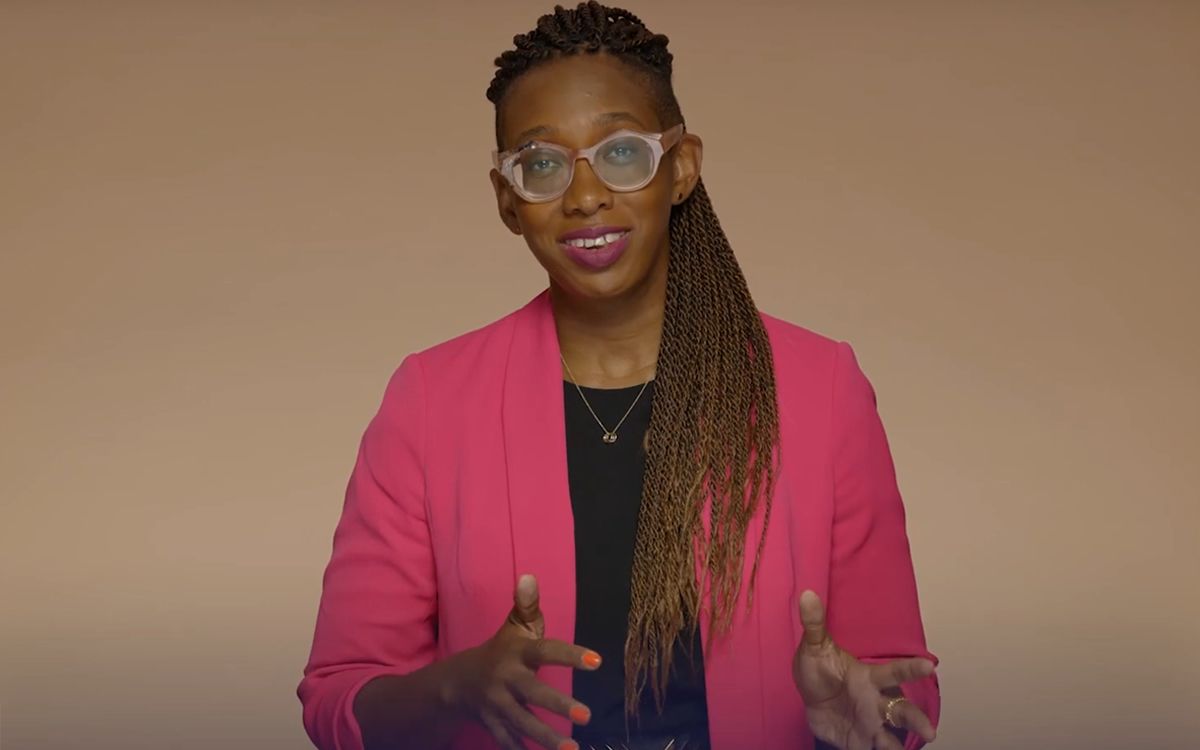
Kelley Robinson, a Black, queer woman and veteran of Planned Parenthood Action Fund, is to become the next president of the Human Rights Campaign, the nation’s leading LGBTQ group announced on Tuesday.
Robinson is set to become the ninth president of the Human Rights Campaign after having served as executive director of Planned Parenthood Action Fund and more than 12 years of experience as a leader in the progressive movement. She’ll be the first Black, queer woman to serve in that role.
“I’m honored and ready to lead HRC — and our more than three million member-advocates — as we continue working to achieve equality and liberation for all Lesbian, Gay, Bisexual, Transgender, and Queer people,” Robinson said. “This is a pivotal moment in our movement for equality for LGBTQ+ people. We, particularly our trans and BIPOC communities, are quite literally in the fight for our lives and facing unprecedented threats that seek to destroy us.”
The next Human Rights Campaign president is named as Democrats are performing well in polls in the mid-term elections after the U.S. Supreme Court overturned Roe v. Wade, leaving an opening for the LGBTQ group to play a key role amid fears LGBTQ rights are next on the chopping block.
“The overturning of Roe v. Wade reminds us we are just one Supreme Court decision away from losing fundamental freedoms including the freedom to marry, voting rights, and privacy,” Robinson said. “We are facing a generational opportunity to rise to these challenges and create real, sustainable change. I believe that working together this change is possible right now. This next chapter of the Human Rights Campaign is about getting to freedom and liberation without any exceptions — and today I am making a promise and commitment to carry this work forward.”
The Human Rights Campaign announces its next president after a nearly year-long search process after the board of directors terminated its former president Alphonso David when he was ensnared in the sexual misconduct scandal that led former New York Gov. Andrew Cuomo to resign. David has denied wrongdoing and filed a lawsuit against the LGBTQ group alleging racial discrimination.
